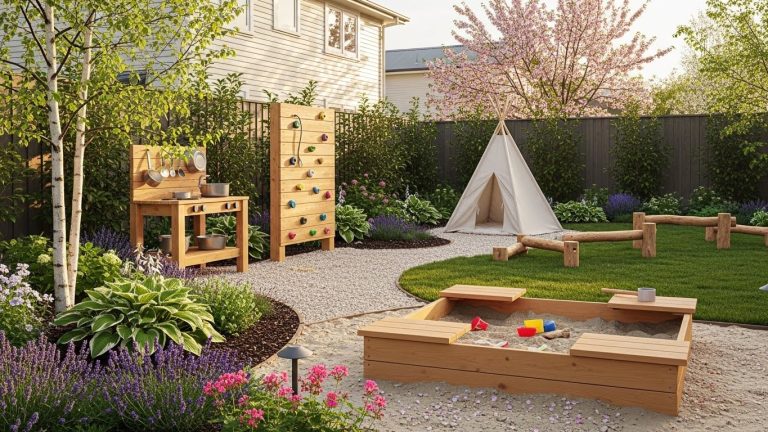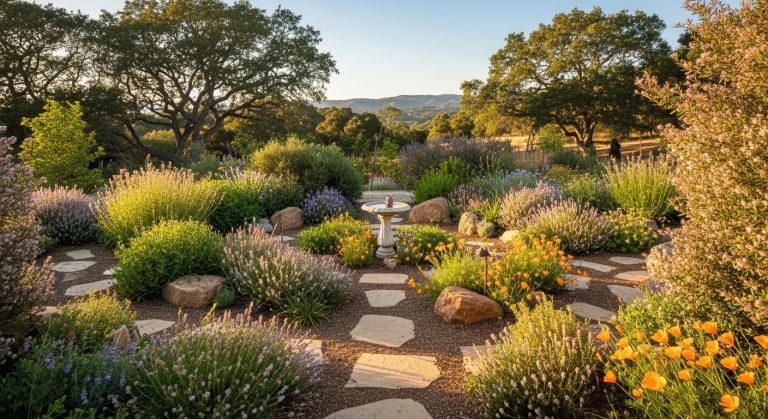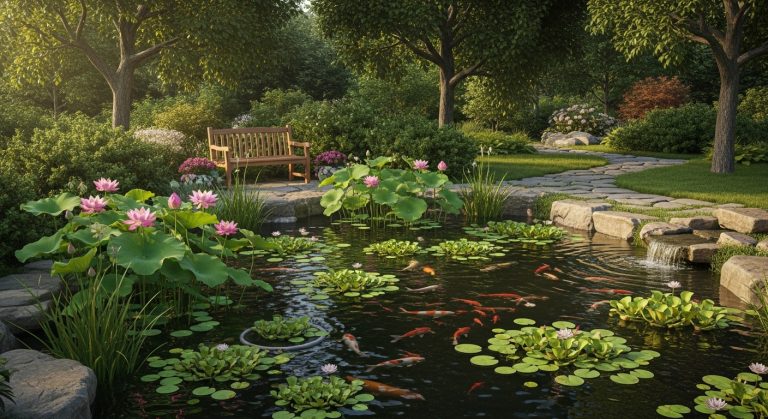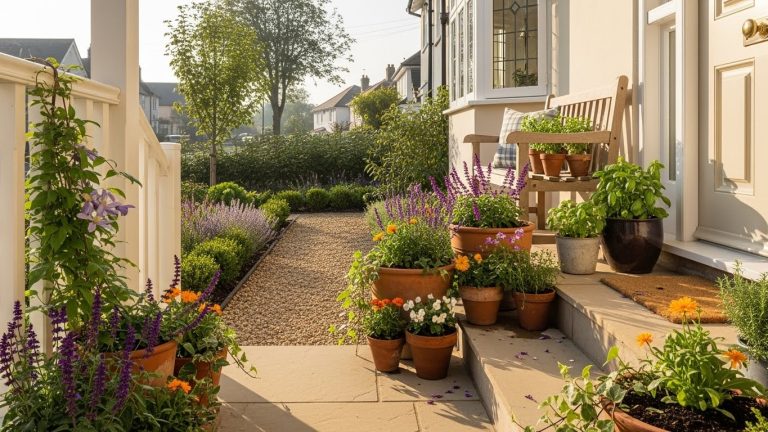Greenhouse Garden: 15 Ideas to Make Your Indoor-Outdoor Space Thrive
Ever notice how stepping into a greenhouse feels like entering a mini tropical retreat? There’s something magical about rows of plants thriving under controlled light and warmth. I’ve spent countless weekends experimenting with small indoor greenhouses and larger backyard structures, and honestly, it’s amazing how much a little planning and organization can turn a few shelves of seedlings into a flourishing edible and ornamental oasis.
Whether you’re limited to a small tabletop greenhouse or have space for a full backyard structure, these 15 ideas show how to make the most of every square foot. They’re practical, achievable, and designed to inspire you to dig in—even if you’ve never grown more than a windowsill plant before.
1. Tiered Shelving for Maximum Space
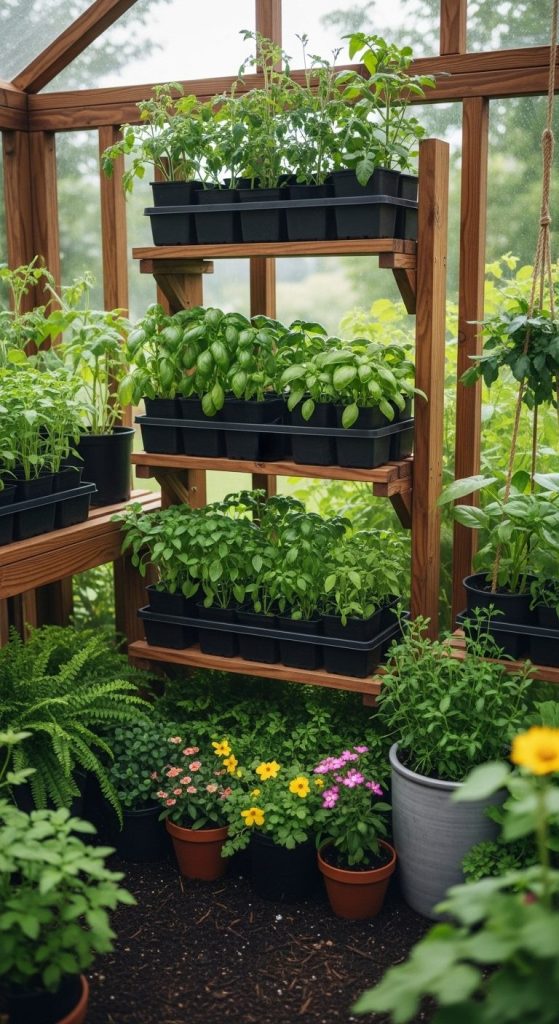
Maximizing space is everything in a greenhouse. Tiered shelving lets you grow seedlings, herbs, and flowering plants at multiple heights without overcrowding. Imagine your basil and tomatoes thriving on top shelves while leafy greens take the lower tiers.
Pros:
- Efficient use of vertical space
- Easier to organize plants by sunlight needs
- Keeps plants accessible without bending
Cons:
- Requires sturdy shelves and level flooring
- May need occasional rotation for light exposure
Mini takeaway: Using vertical space feels like unlocking a secret level in your gardening game—everything fits, grows, and thrives.
2. Hanging Planters for Herbs
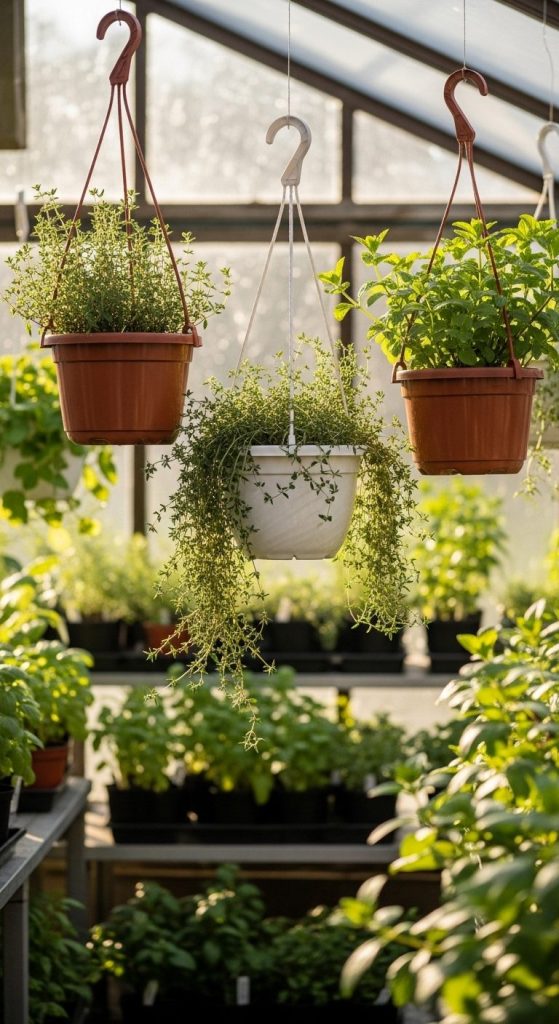
Hanging planters are ideal for trailing herbs like thyme, oregano, and mint. They free up floor space and create a layered, lush look that’s both functional and visually appealing.
Pros:
- Frees up shelving and floor space
- Adds greenery at eye level
- Perfect for aromatic herbs
Cons:
- Needs secure hooks and weight considerations
- Watering requires extra care to avoid drips
Mini takeaway: A hanging herb setup feels like your greenhouse is floating in freshness—practical, fragrant, and stylish.
3. Companion Planting Sections
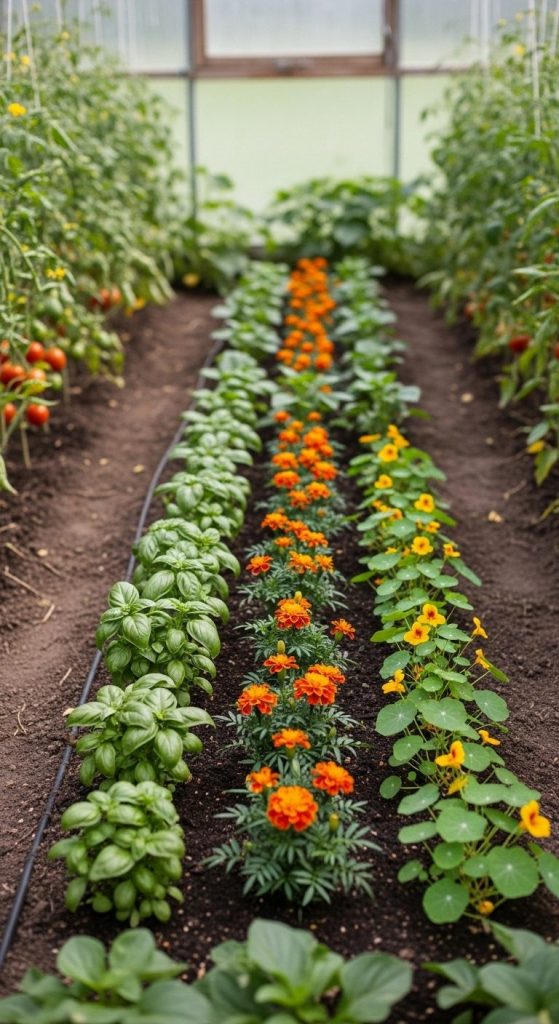
Design your greenhouse with companion planting in mind. Tomatoes grow well with basil, peppers with marigolds, and cucumbers with nasturtiums. This not only looks organized but improves plant health.
Pros:
- Promotes pest control naturally
- Enhances growth and yield
- Makes harvesting intuitive
Cons:
- Needs planning and knowledge of plant compatibility
- Overcrowding can reduce airflow
Mini takeaway: Companion planting is like matchmaking for plants—when done right, everyone thrives.
4. Automated Watering System
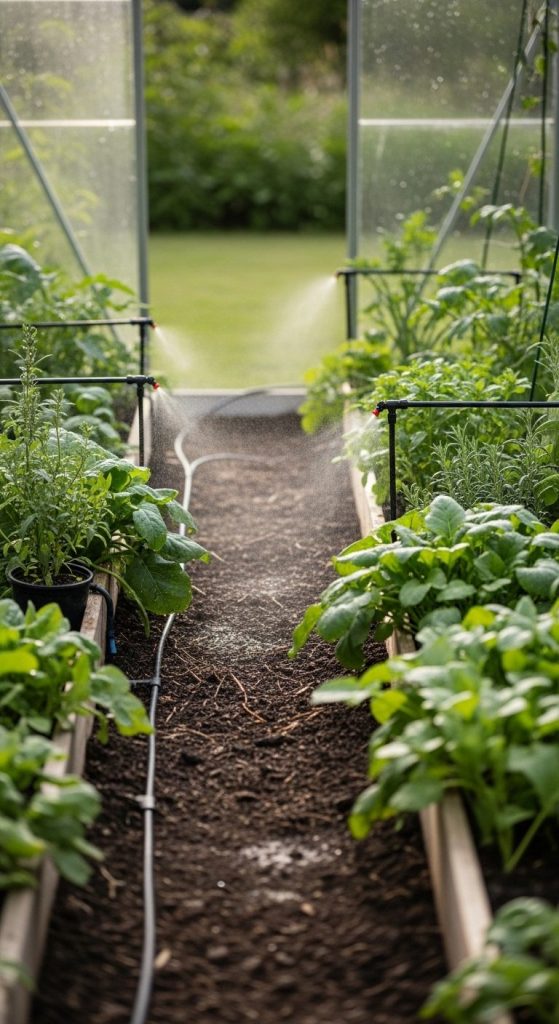
Installing a drip irrigation or mist system keeps plants hydrated consistently, reducing stress and manual labor. Even a small greenhouse benefits from timed watering setups.
Pros:
- Saves time and effort
- Prevents inconsistent watering stress
- Efficient water usage
Cons:
- Initial setup cost
- Needs periodic maintenance and unclogging
Mini takeaway: Automated watering lets your greenhouse feel self-sustaining without constant babysitting.
5. Seasonal Rotation Beds
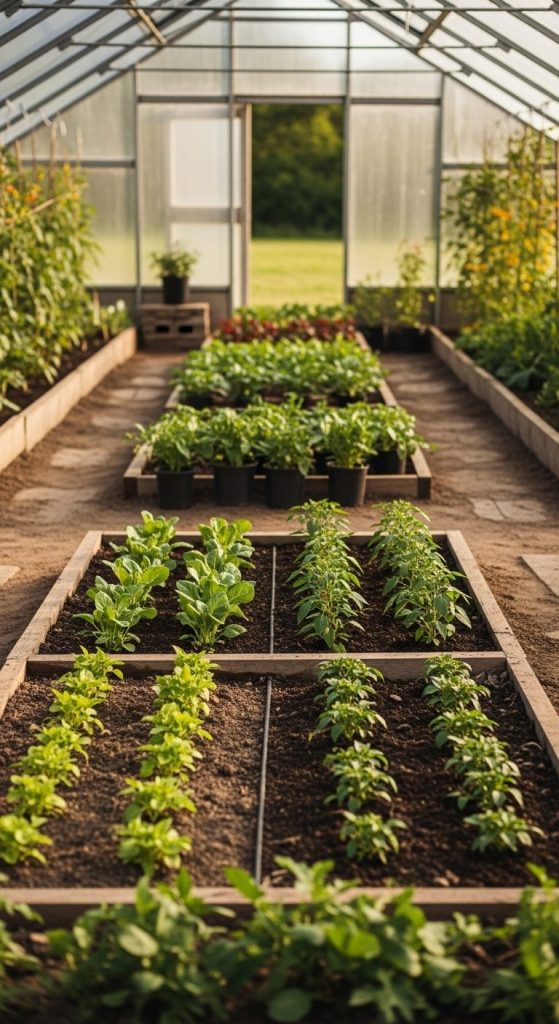
Set up beds or containers for seasonal crops. Winter leafy greens, spring tomatoes, summer peppers, and fall herbs ensure your greenhouse stays productive year-round.
Pros:
- Continuous harvests
- Keeps space active and organized
- Allows for experimenting with new varieties
Cons:
- Requires planning for rotation
- Some plants may need supplemental light in off-season
Mini takeaway: Seasonal rotation is like having four gardens in one—fresh crops all year with careful timing.
6. Raised Beds Inside Greenhouse
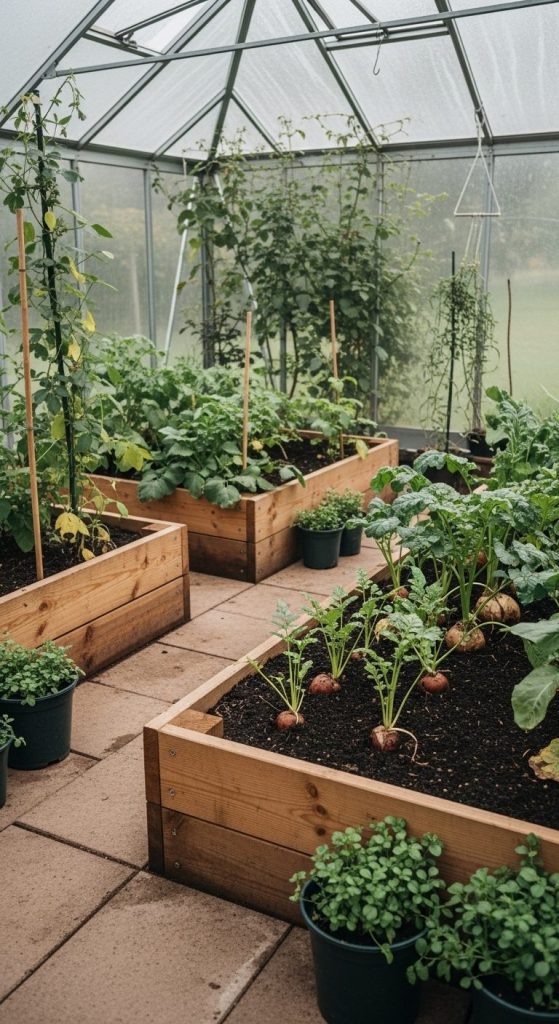
Raised beds improve drainage and allow for deeper soil, ideal for root vegetables or larger plants. They also make the greenhouse easier to maintain.
Pros:
- Better root growth
- Reduces bending and soil compaction
- Can be customized for height and width
Cons:
- Takes up more floor space
- Initial construction effort
Mini takeaway: Raised beds transform your greenhouse from simple shelves to a structured, productive growing environment.
7. Vertical Trellises for Climbers
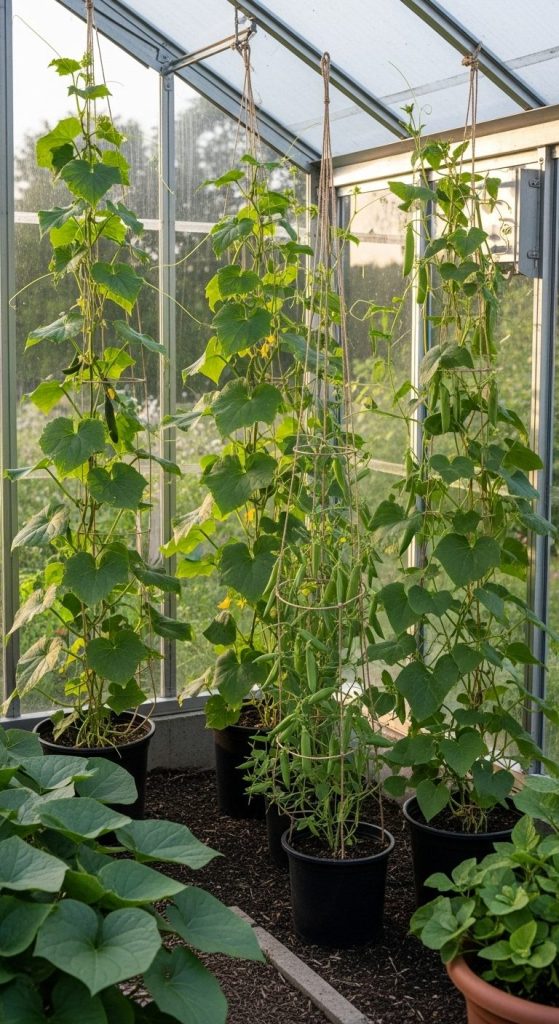
Use trellises along walls or partitions for climbing plants like cucumbers, beans, or peas. This maximizes space and adds height without crowding.
Pros:
- Efficient vertical use
- Creates a visually interesting layered effect
- Easier to harvest
Cons:
- Needs regular training and tying
- Heavy climbers require strong supports
Mini takeaway: Trellises are like the skeleton of your greenhouse—functional and visually structured.
8. Seedling Propagation Corner

Dedicate a section for seedlings with fluorescent or LED grow lights. Keeping young plants separate ensures they get enough light and are easier to monitor.
Pros:
- Higher germination success
- Keeps young plants organized
- Easy to transition to larger beds
Cons:
- Requires artificial light setup
- Extra attention for humidity and watering
Mini takeaway: A propagation corner is your greenhouse’s nursery—watching seedlings sprout is addictive.
9. Aromatic Plant Nooks
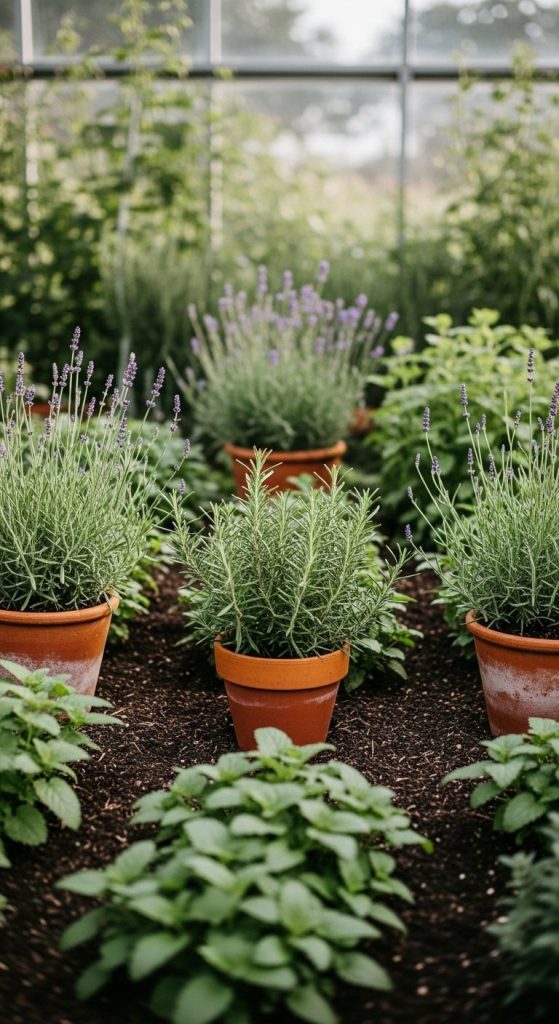
Incorporate fragrant plants like lavender, rosemary, or lemon balm. They improve the sensory experience and can also act as natural pest deterrents.
Pros:
- Adds pleasant aroma
- Enhances greenhouse ambiance
- Supports beneficial insects
Cons:
- Some need full sun
- Can compete for space if not planned
Mini takeaway: Aromatic nooks make stepping into your greenhouse feel like entering a fragrant retreat.
10. Seasonal Flower Displays

Don’t limit your greenhouse to edibles—add flowering plants like orchids, fuchsias, or geraniums for seasonal pops of color. It lifts the space aesthetically and emotionally.
Pros:
- Brightens the greenhouse visually
- Can attract pollinators if moved outside temporarily
- Breaks monotony of greenery
Cons:
- Flowers may need extra care
- Seasonal blooms require planning
Mini takeaway: A splash of flowers turns your greenhouse into a cheerful, inspiring sanctuary.
11. Tool & Pot Organization Stations
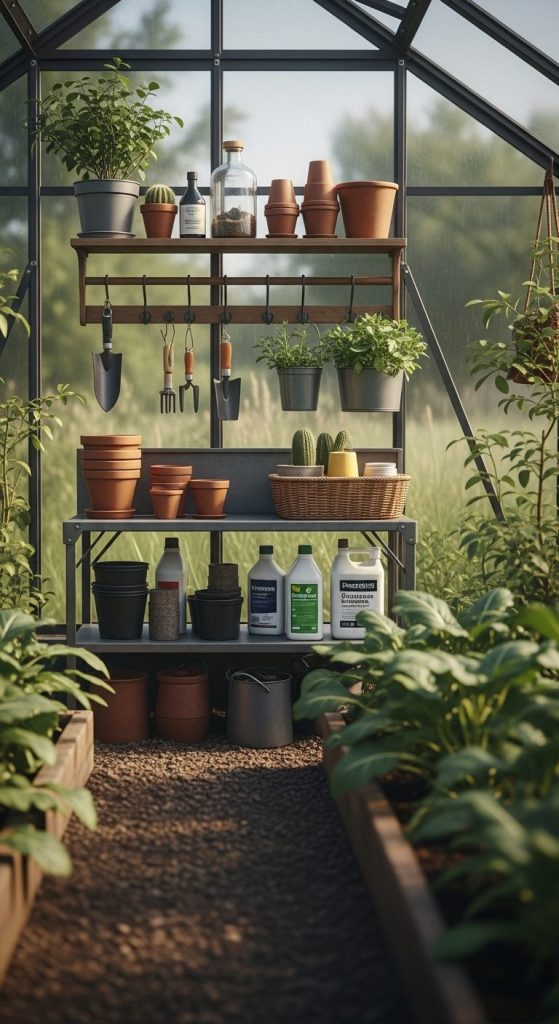
Designate small shelves or hooks for pots, tools, and fertilizers. It keeps the space tidy and ensures efficiency when planting or harvesting.
Pros:
- Reduces clutter
- Makes gardening tasks smoother
- Prevents lost tools
Cons:
- Takes some space from plant beds
- Needs maintenance to stay organized
Mini takeaway: Organization stations may seem minor, but they save mental energy and make the greenhouse enjoyable.
12. Indoor Compost Area

Set aside a corner for a small compost bin. Kitchen scraps, plant clippings, and soil amendments can recycle into nutrient-rich material for your greenhouse beds.
Pros:
- Sustainable nutrient source
- Reduces waste
- Supports soil health naturally
Cons:
- Requires odor management
- Needs monitoring to avoid pests
Mini takeaway: Composting inside your greenhouse closes the loop on your garden ecosystem—eco-friendly and rewarding.
13. Multi-Level Plant Display Tables

Tables with staggered levels let you display multiple plant types in a compact footprint, ideal for ornamental and edible plants side by side.
Pros:
- Maximizes horizontal space
- Keeps plants accessible
- Visually dynamic and layered
Cons:
- Needs sturdy materials
- Can require careful watering management
Mini takeaway: Multi-level tables make your greenhouse feel curated, professional, and cozy at the same time.
14. Climate Control Fans & Ventilation
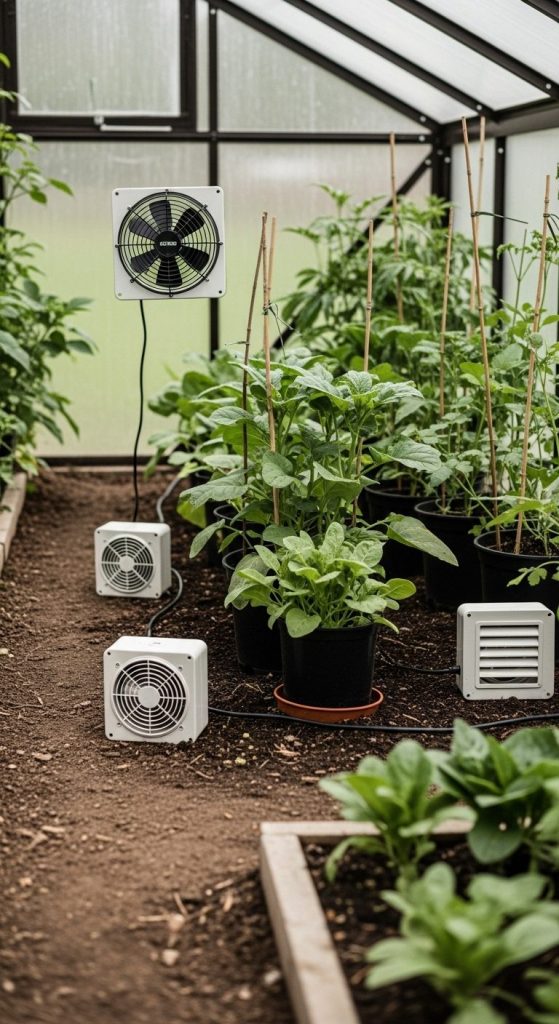
Install small fans or vents to regulate temperature and humidity. Good airflow prevents mold, strengthens stems, and supports plant health.
Pros:
- Prevents disease
- Supports robust growth
- Easy to automate with thermostats
Cons:
- Extra cost and installation
- Requires occasional cleaning
Mini takeaway: Proper airflow is invisible, but it’s the secret behind a healthy, thriving greenhouse.
15. Mini Greenhouse Garden Path
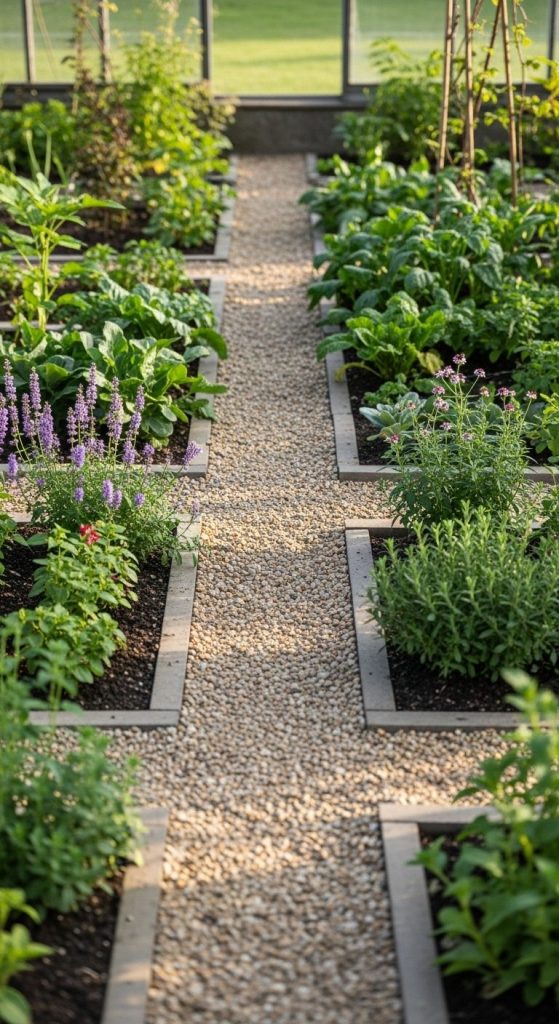
Add a narrow gravel or stone path through the greenhouse. It separates sections, keeps feet dry, and guides the eye through your organized space.
Pros:
- Clear navigation
- Reduces soil compaction
- Adds visual structure
Cons:
- Slightly reduces planting area
- Needs occasional weeding
Mini takeaway: Paths may seem small, but they transform your greenhouse into an accessible, flowing, and polished space.
Conclusion
A greenhouse garden is more than a plant haven—it’s a lifestyle upgrade. From tiered shelves to aromatic nooks, each idea here offers practical ways to maximize space, boost productivity, and create a visually inviting environment. Personally, I love experimenting with vertical trellises and seasonal rotations—it’s like watching a living calendar evolve daily.
Start with one or two concepts, like a hanging herb corner or a propagation zone, and build from there. Over time, your greenhouse becomes not just functional, but a place to retreat, reflect, and enjoy the simple joy of watching life grow. Every plant you nurture adds both beauty and purpose, turning your greenhouse into a serene, productive sanctuary.

William Martin is a passionate bowler who spends most of his weekends playing the sport. With years of intense experience under his belt, William decided to share his knowledge by creating BOWLING OCEAN. Join me on this journey to explore the world of bowling and discover the tips and tricks to becoming a pro.

